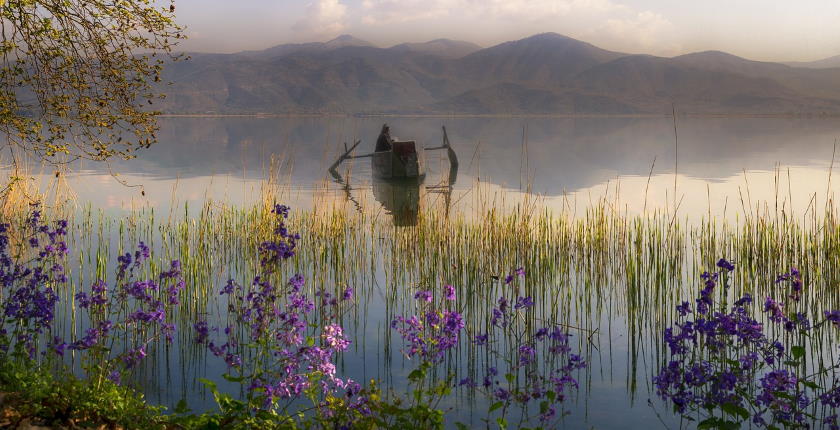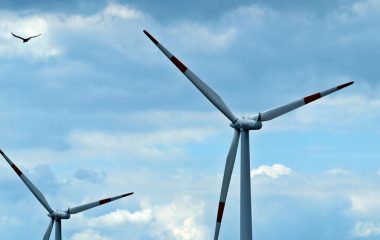
Photo: Ioannis Ioannidis from Pixabay
Municipalities and the regional government of Western Macedonia want an application for a floating photovoltaic system of 500 MW to be rejected. The capital Kozani filed an official complaint with the Regulatory Authority for Energy, claiming InterPhoton’s project would devastate biodiversity and hamper development at the Polyfytos artificial reservoir.
Following consultations with the regional administration and other local authorities, the Municipality of Kozani submitted an objection to the Regulatory Authority for Energy (RAE) with regard to an application for two floating solar power plants of 250 MW each at the Polyfytos artificial reservoir. The project in northern Greece was launched by businessman Savvas Zafeiratos’ InterPhoton Investment.
Uncontrolled investments in photovoltaics in the lake’s area are presented as sustainable alternatives amid the current coal phaseout efforts, but such endeavors cannot be planned without an environmental assessment and protection measures and without taking into account the needs of the inhabitants and the activities that take place in the lake such as sports, fishing, recreation and tourism, the document says. The region’s capital city urged for the inclusion of all stakeholders in the process.
The RAE’s map shows the two units would exceed by far the limit of 5.5% of the surface of the lake, the municipality said and pointed to the international sustainability standards for floating solar power plants. The plan affects regional and local development plans, according to the complaint.
Biodiversity warning
The local authority raised concern over the effect of shading on the quality of water and fish and crayfish habitat, quoting scientists. A local environmentalist group stressed the lake meets all the conditions to be declared a special protection area for birds and added the area is rich in biodiversity.
The official objection mirrors an earlier statement by the regional administration of Western Macedonia and the joint letter that it received from the mayors of Kozani, Servia and Velventos. The Municipality of Servia said the surface of reservoirs of hydroelectric systems such as Polyfytos fluctuate in line with water usage and that the potential size of floating photovoltaics should thus be capped. The dam on the Haliacmon, Greece’s longest river, hosts a 375 MW power plant.
The regional and local authorities said the map shows as much as one quarter of the artificial lake would be covered with solar panels, including PPC Renewables’ floating photovoltaic project. The regional administration said it would propose licensing for renewable energy plants to be suspended until the spatial planning and legal framework for Western Macedonia are approved.
Investor denies it would cover too much of Polyfytos lake
InterPhoton claimed it would use only three of the lake’s 73 square kilometers. PPC Renewables, a subsidiary of state-owned Public Power Corp., wants to install 50 MW in floating solar power plants, starting with a unit in lake Polyfytos and a pond in nearby Florina.
The Kozani environmental movement suggested InterPhoton’s proposal should be rejected. It added PPC Renewables could be allowed to install a total of 50 MW but only at the northeastern side of the lake, where the dam is located.
PPC owns the Polyfytos hydropower plant, while 70% of the reservoir, which was formed in 1973, is on Servia’s territory. The environmentalists also said PPC should cede 10% of ownership in the future project to the local community.
Legislation for floating solar power plants is scheduled to be rolled out in the spring. According to the Greek press, the government has the ambition to complete it by the end of the month.
InterPhoton’s project matches size of biggest existing photovoltaic plant in Europe
The size of InterPhoton’s proposed project would match Europe’s largest ground-mounted solar power plant. Iberdrola completed its Núñez de Balboa facility in Spain one year ago.
BayWa r.e. and its subsidiary GroenLeven finished the biggest floating photovoltaic system in the continent in July and sold it to a Dutch consortium. The Bomhofsplas plant, built on a lake in Zwolle in the Netherlands, has 27.4 MW in peak capacity.
GEK Terna Group recently applied at the RAE for producer certificates for three floating photovoltaic plants at artificial reservoirs in Greece, with a total capacity of 265 MW. The largest one, at Kastraki in the country’s west, would have the capacity of 120 MW.
Pros vs. cons in floating solar power tech
Proponents point to the benefits of avoiding land use, saving substantial amounts of water as shading reduces evaporation and the fact that floating solar panels are more efficient due to the water’s cooling effect. On the other hand, there are indications that the lack of sunshine leads to an increase in toxic algae and reduces the amount of deepwater oxygen, affecting flora and fauna and carbon dynamics, which means the covered surface needs to be limited.
Recent studies have also pointed to risks of contamination from the materials in the photovoltaic panels and the impact of the electromagnetic field around the cables. As boats are used for construction and maintenance, there is a danger of chemical spills.


















Be the first one to comment on this article.